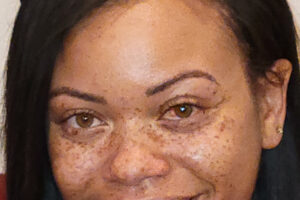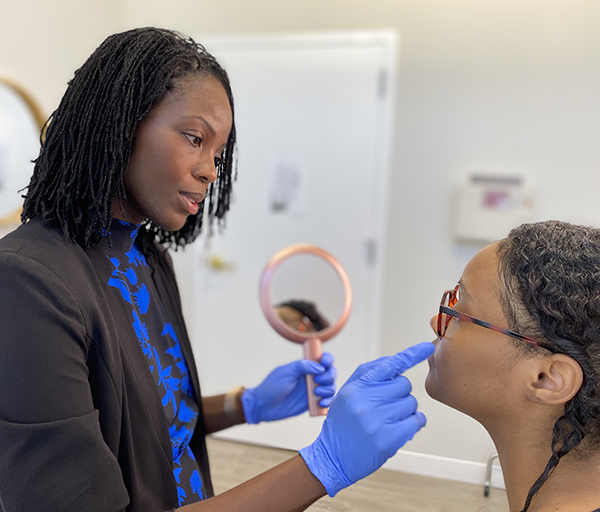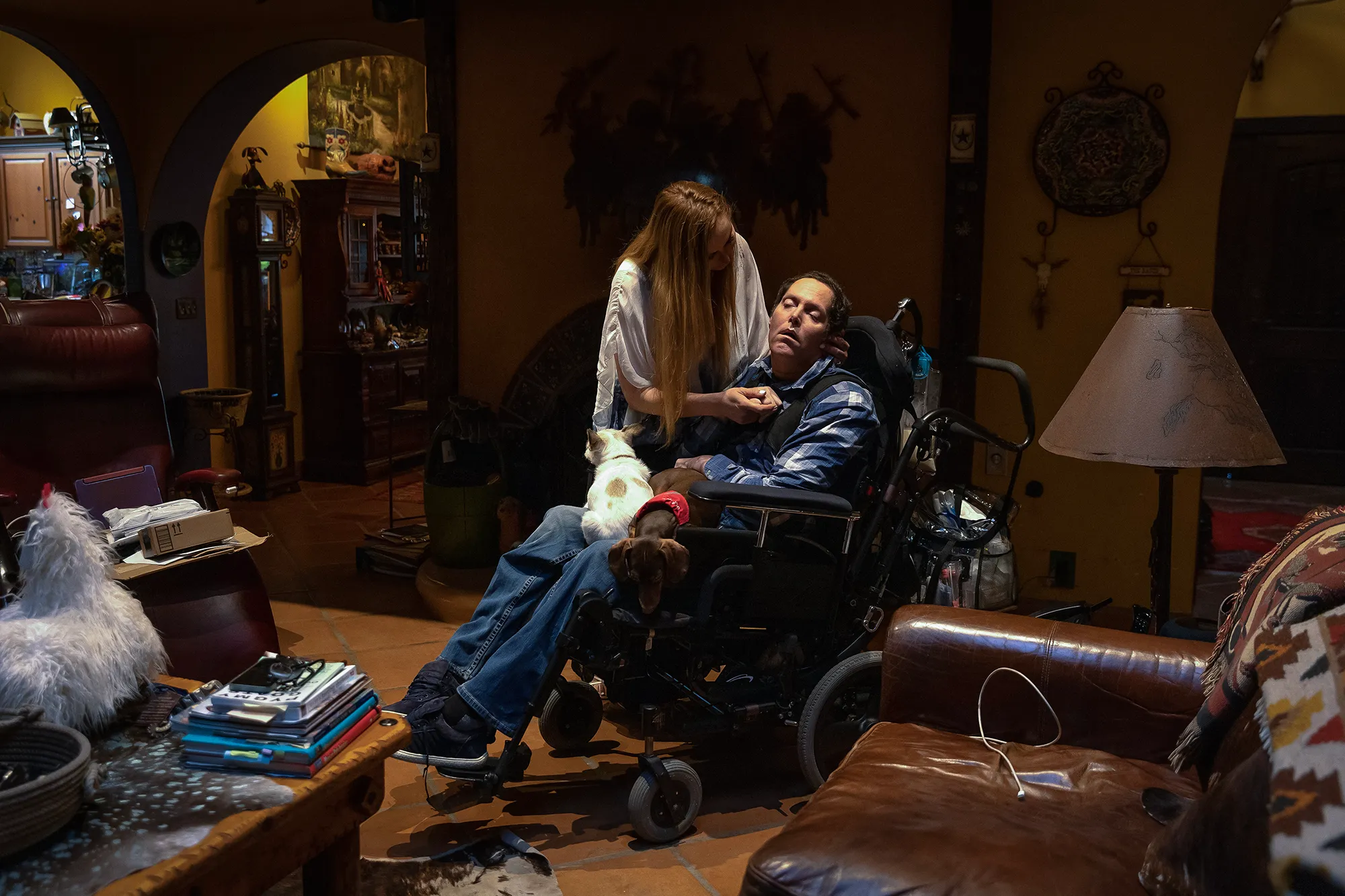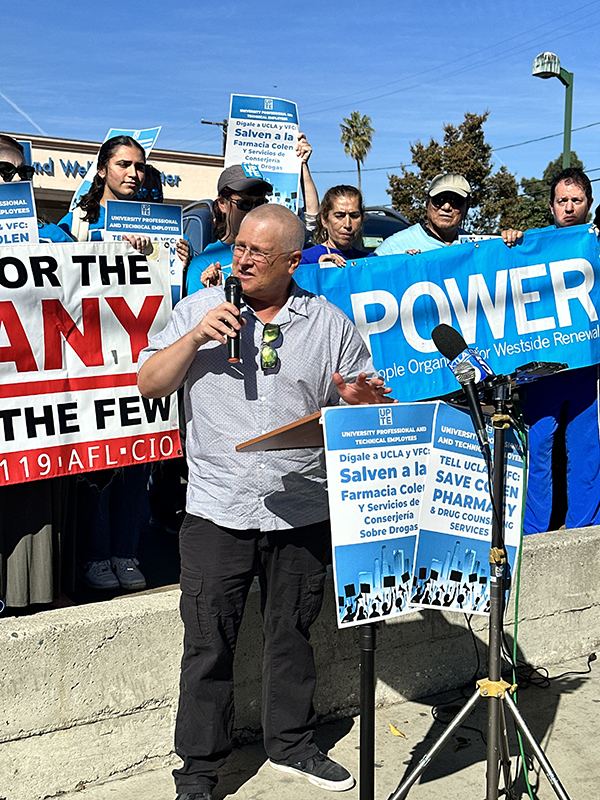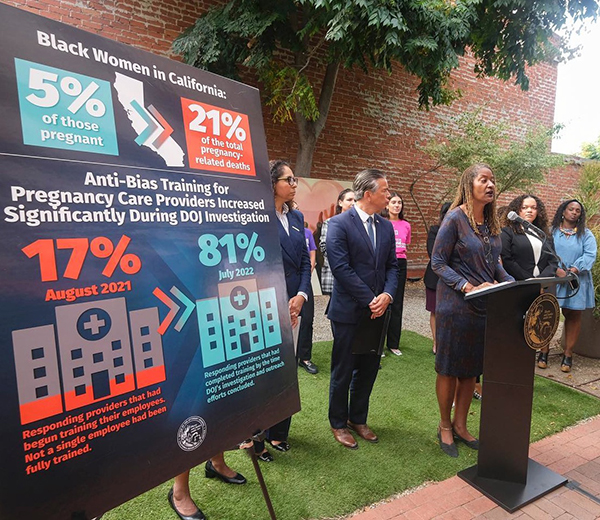By Marie Y. Lemelle, Contributing Writer
While the consistent use of face coverings and constant hand washing is a good defense against the COVID-19 spread, our skin is battling a variety of dermatitis.
One of those conditions is called maskne. It may sound odd, but it is a real thing. In fact, it is common among athletes who wear helmets since dirt, oil and sweat are trapped inside the head protective gear that can aid in the growth of bacteria. To help avoid the same effect with face masks, wash them often and wash your face twice a day.
Dr. Ife Rodney, the founding director of Eternal Dermatology + Aesthetics, has extensive experience in all aspects of cosmetic, surgical and medical dermatology for all skin types. Dr. Rodney answers questions about how COVID-19 precautions, stress and other factors can trigger problematic skin conditions.
ML: Skin conditions have emerged, mainly because of prolonged contact with personal protective equipment and excessive personal hygiene. What is maskne?
IR: Maskne is a type of acne breakout that is due to wearing a face mask. Technically referred to as “acne mechanica,” maskne is triggered by friction and occlusion caused by wearing the mask for long periods of time. Maskne is different from regular acne in that it occurs mainly in the areas covered by the mask, especially at the edges where the mask or face shield presses on the skin.
In warm weather, the combination of sweat, oil and moisture from breathing under the mask clogs the pores. The friction and chafing of the mask in contact with the moist skin can cause it to break down.
In cold, dry air, the mask rubbing against dry skin can cause the hair follicles to break open, which then allows acne-causing bacteria into the skin.
ML: Why are the most affected skin areas the nasal bridge, chin and cheeks?
IR: On the face, the areas where the mask directly presses, like the nasal bridge, chin and along the cheeks, experience more skin breakdown, from the constant pressure of the mask, against the moist skin.
As the COVID pandemic evolves, the list of cutaneous manifestations gets longer. Like other viral rashes, rashes caused by COVID may be seen in many other conditions. The good news is that most of these dermatologic findings resolve on their own.
ML: Describe pressure injury, contact dermatitis, itch, pressure urticaria, and exacerbation of preexisting skin diseases, including seborrheic dermatitis and acne. What are the symptoms and treatments?
IR: Pressure injury is constant pressure at a specific site, the skin at this location can begin to break down. The tender skin initially appears red or brownish in color and then breaks appear in the surface. When you must wear a mask for long periods of time, you should rotate the shapes and types of mask to ensure that the pressure is not on the exact same location all day.
Contact dermatitis is an allergic skin reaction that occurs when the skin encounters harsh materials. These could include cleaning solutions, soap and even gloves. The skin becomes red, raised, and itchy, and may even have painful fissures or cracks.
Steroid creams help to easy the inflammation and soothe the itch sensation. Itchiness is an early symptom that the skin is inflamed. It can be seen in all of these conditions. As soon as your skin becomes itchy, it’s time to pay close attention and make changes to your routine to protect your skin from further damage.
Pressure urticaria (or hives) is caused by friction and pressure on the skin for extended periods of time. The skin may be red, raised and itchier. Treatments include reducing or removing the source of pressure, and steroid creams and oral antihistamines like Benadryl or Zyrtec.
Seborrheic dermatitis (exacerbation of pre-existing skin diseases) is an inflammatory skin response where there is redness and scaling on the face, including the sides of the nose and the cheeks. Moisture, oil and irritation from the mask can cause seborrheic dermatitis to flare. A steroid cream suitable for use on the face can help to reduce the inflammation, redness, and scaling of the skin.
The first step to treating acne or “maskne” is to remove the mask (when at home or alone) and cleanse the skin consistently with a gentle, creamy cleanser. Regular exfoliation, once to twice a week, helps to unclog the pores.
ML: What is the recommended care during COVID-19 for patients with autoimmune and chronic inflammatory disorders, such as psoriasis, atopic dermatitis, lupus, scleroderma, and hidradenitis suppurativa, which may require immune-suppressive therapy?
IR: Many dermatologic conditions are chronic and require long-term use of immunosuppressive medications. Having an altered immune system is one of the risk factors for a poor outcome related to COVID. On the other hand, stopping these medications could result in a severe flare of the dermatologic condition which would very negatively affect the individual’s quality of life. For this reason, we continue the immunosuppressive therapy for skin conditions, while ensuring that the patients understand that they are “high risk” and should be extra cautious when it comes to social distancing and hygiene practices.
Some simple preventative measures include washing the hands with a gentle, moisturizing soap, and using lukewarm water (avoid hot water as it will dry out the skin.) Most importantly, use emollients, barrier creams, and moisturizers, like Vaseline to protect delicate skin especially after cleansing your skin.
Marie Y. Lemelle is the founder of www.platinumstarpr.com and a film producer. She can be reached at MarieLemelle@platinumstarpr.com. Follow her on Instagram @platinumstar.


